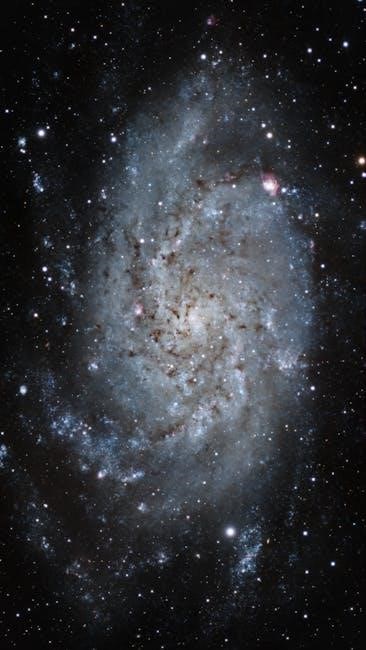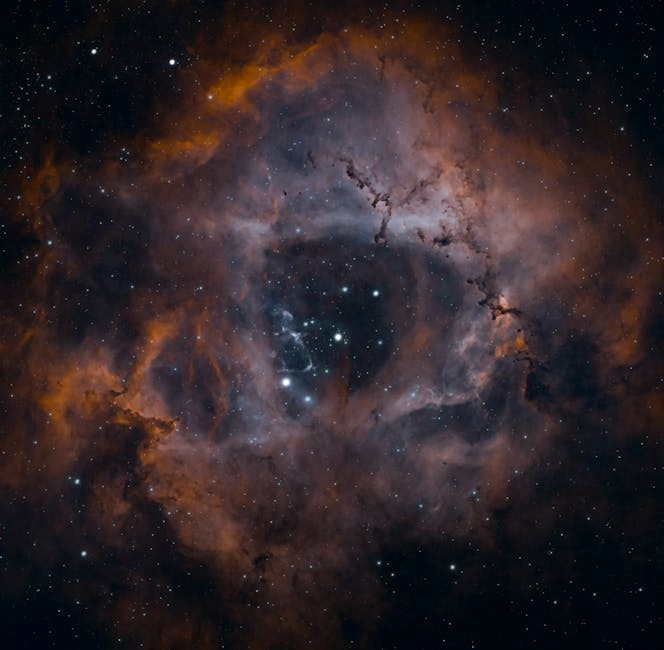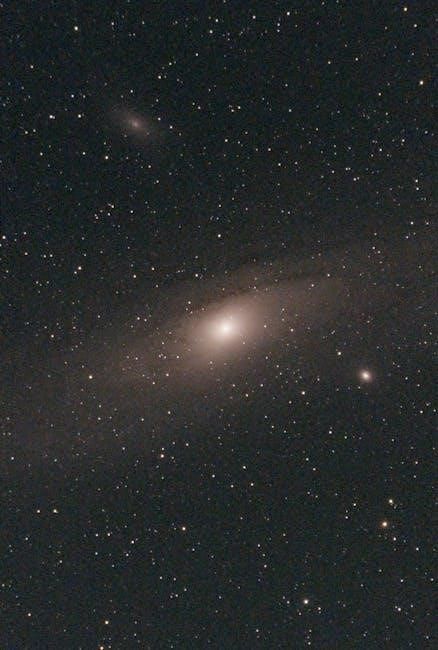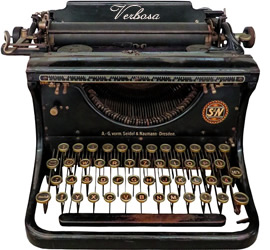The Interstellar script, written by Jonathan Nolan and Christopher Nolan, explores humanity’s cosmic journey through a wormhole. This screenplay masterfully blends science, emotion, and visual grandeur, offering deep insights into its themes and character development. Available as a PDF, it serves as a valuable resource for filmmakers and enthusiasts, providing a detailed look into the film’s narrative structure and creative vision.
1.1 Overview of the Film and Its Significance
Interstellar, directed by Christopher Nolan, is a thought-provoking sci-fi epic that explores humanity’s survival through a newly discovered wormhole. Written by Jonathan Nolan and Christopher Nolan, the film delves into themes of love, sacrifice, and human ingenuity. The script, available as a PDF, reveals the intricate plot structure and emotional depth of the story. The film’s significance lies in its blend of science fiction and scientific accuracy, influenced by physicist Kip Thorne. It has become a landmark in modern cinema, inspiring both viewers and filmmakers with its visual grandeur and philosophical questions about space and time. The Interstellar script serves as a valuable resource for understanding the film’s narrative and creative vision.
1.2 Importance of the Script in Understanding the Film
The Interstellar script provides unparalleled insight into the film’s narrative structure, character arcs, and thematic depth. It reveals the meticulous planning behind the story, showcasing how complex scientific concepts were woven into the emotional journey of the characters. The script highlights Christopher Nolan’s storytelling techniques, such as non-linear storytelling and the balance between science and emotion. By analyzing the screenplay, viewers can gain a deeper appreciation for the film’s pacing, dialogue, and symbolic elements. The script serves as a vital tool for understanding the creative decisions that shaped this cinematic masterpiece, making it indispensable for both fans and aspiring screenwriters.

Background and Development of the Script
The Interstellar script was developed through a collaborative process between Jonathan Nolan, Kip Thorne, Lynda Obst, and Christopher Nolan, blending scientific accuracy with emotional narrative depth.
2.1 The Original Script by Jonathan Nolan
Jonathan Nolan’s original script for Interstellar laid the groundwork for the film’s blend of science and emotion. His draft explored complex themes like time dilation, wormholes, and humanity’s survival, drawing inspiration from Kip Thorne’s theories. Nolan’s script introduced key characters, including Cooper, a pilot-turned-astronaut, and his daughter Murph, whose relationship became central to the story. The original draft emphasized the scientific plausibility of space travel while maintaining a humanistic core. Nolan’s work set the stage for Christopher Nolan’s later revisions, ensuring the script’s intellectual depth and emotional resonance. His contributions remain pivotal in shaping the film’s narrative foundation.
2.2 Contributions of Kip Thorne and Lynda Obst
Kip Thorne, a renowned physicist, played a crucial role in shaping the scientific accuracy of the Interstellar script. His expertise in theoretical physics ensured the portrayal of wormholes, black holes, and time dilation was grounded in real science. Lynda Obst, a producer with a passion for science-driven stories, championed the project’s unique blend of intellect and emotion. Together, they collaborated with the writers to refine the narrative, ensuring it balanced scientific complexity with accessibility. Their contributions elevated the script’s credibility and enhanced its storytelling depth, making it a landmark in science fiction filmmaking.
2.3 Christopher Nolan’s Involvement and Revisions
Christopher Nolan’s involvement in the Interstellar script was pivotal, as he brought his signature complexity and depth to the narrative. Nolan revised the screenplay to emphasize emotional resonance, particularly through Cooper’s relationship with Murphy. He streamlined the plot, ensuring scientific concepts were accessible while maintaining intellectual rigor. Nolan’s visual storytelling approach also influenced key scenes, such as the tesseract sequence. His revisions balanced action with introspection, creating a film that was both visually stunning and emotionally profound. Nolan’s direction and script tweaks were instrumental in shaping the final product into a critically acclaimed masterpiece.

Where to Download the Interstellar Script PDF
The Interstellar script PDF can be downloaded from official screenwriting archives or reputable websites offering free and paid screenplays for educational or personal use.
3.1 Official Sources for the Complete Screenplay
The complete Interstellar screenplay can be accessed through official sources like Warner Bros. or the film’s official website. Studios often release scripts for award consideration or educational purposes. Additionally, organizations such as the Writers Guild of America (WGA) or the Academy of Motion Picture Arts and Sciences (AMPAS) may provide access to nominated or archived scripts. These sources ensure authenticity and legality, offering the full, unedited version of the screenplay. Fans and scholars can rely on these platforms for a genuine and comprehensive reading experience, free from unauthorized modifications or omissions.
3.2 Websites Offering Free PDF Downloads
Websites like ScriptSlug, The Script Lab, and IMSLP often provide free PDF downloads of screenplays, including Interstellar. These platforms cater to screenwriting enthusiasts and students, offering easy access to scripts for educational purposes; Users can search for “Interstellar script PDF” on these sites to find downloadable versions. However, it’s essential to verify the authenticity and completeness of the script before downloading, as some versions may be incomplete or unofficial. Always ensure compliance with copyright laws when accessing such materials.
3.3 Legal and Ethical Considerations for Downloading
Downloading the Interstellar script PDF from unauthorized sources may violate copyright laws, as screenplays are protected intellectual property. Always ensure you are using official or legally approved platforms to access the script. Unauthorized downloads can infringe on the rights of the writers, producers, and studios involved in the film’s creation. Ethically, it is important to support creators by accessing content through legitimate channels. If you plan to use the script for educational purposes, verify that the source permits such use. Respect copyright laws to avoid legal consequences and promote fair practices in the creative industry.

Key Elements of the Interstellar Script
The Interstellar script masterfully blends emotional depth with scientific accuracy, exploring themes of humanity, time, and space, making it a compelling read for both thinkers and emotive audiences.
4.1 Plot Summary and Structure
The Interstellar script follows astronaut Cooper on a mission to save humanity as Earth faces environmental collapse. A wormhole near Saturn leads to distant planets, testing time and human bonds. The narrative weaves together Cooper’s journey with his daughter Murphy’s story on Earth, exploring themes of love, sacrifice, and survival. The script’s non-linear structure uses flashbacks and parallel timelines, blending emotional depth with scientific exploration. The climax reveals a tesseract where Cooper communicates with Murphy, ensuring humanity’s survival. The ending balances hope and melancholy, leaving a lasting impression on the audience.
4.2 Character Development and Dialogue
The Interstellar script excels in crafting complex, emotionally resonant characters. Cooper’s transformation from a grieving father to a selfless astronaut drives the narrative, while Murphy’s evolution from a distraught child to a determined scientist mirrors his journey. Dialogues are poignant and purposeful, such as Cooper’s heartfelt goodbye to Murphy and his philosophical exchanges with Dr. Brand. The script also explores the moral dilemmas of Professor Hathaway and the ethical debates between humans and AI, like TARS. These interactions deepen the story’s emotional and intellectual layers, making the characters relatable and their motivations compelling.
4.3 Themes and Symbolism in the Script
The Interstellar script delves into profound themes, including the power of love transcending space and time, humanity’s survival instinct, and the debate between science and emotion. Symbolism is woven throughout, with the tesseract representing the boundless nature of parental love. The wormhole symbolizes opportunity and the unknown, while the black hole Gargantua embodies the awe-inspiring complexity of the universe. These elements, combined with the script’s existential questions, create a rich narrative that explores human resilience, sacrifice, and the enduring connection between past, present, and future.

The Science Behind the Script
The script incorporates real scientific concepts like wormholes, black holes, and time dilation, collaborated on by physicist Kip Thorne, blending science with emotional storytelling seamlessly.
5.1 Accuracy of Scientific Concepts
The Interstellar script meticulously blends scientific accuracy with cinematic storytelling, particularly in its depiction of wormholes, black holes, and time dilation. The film’s portrayal of gravitational forces and spacetime curvature aligns with Einstein’s theory of general relativity. Kip Thorne ensured that visual effects, like the black hole Gargantua, were scientifically plausible. While some creative liberties were taken, the script remains grounded in real theoretical physics, offering audiences a glimpse into complex astronomical phenomena while maintaining narrative integrity and emotional depth.
5.2 Collaboration with Physicist Kip Thorne
Kip Thorne, a renowned theoretical physicist, played a pivotal role in shaping the scientific authenticity of the Interstellar script. His collaboration with Christopher Nolan and the writers ensured that complex concepts like wormholes, black holes, and gravitational forces were depicted accurately. Thorne’s expertise in general relativity and astrophysics provided the foundation for the film’s visual and narrative elements. His involvement not only enhanced the script’s credibility but also bridged the gap between science and storytelling, making advanced physics accessible to a broad audience while maintaining artistic integrity.
5.3 Visualizing Wormholes and Black Holes
The Interstellar script brought to life stunning visualizations of wormholes and black holes, blending art and science. The film’s visual effects team, guided by Kip Thorne’s theories, created breathtaking depictions of these cosmic phenomena. The black hole Gargantua was rendered with unprecedented accuracy, showcasing gravitational lensing and frame-dragging effects. Wormholes were designed to appear as shimmering, tunnel-like portals, emphasizing their role as pathways through spacetime. These visuals not only amazed audiences but also provided a scientifically grounded representation of these mysterious objects, enhancing the film’s educational and emotional impact.

Comparing the Script to the Final Film
The Interstellar script and film differ in pacing and focus, with the movie emphasizing emotional depth over some scientific complexities, enhancing its universal appeal.
6.1 Differences Between the Original Draft and the Movie
The original Interstellar script included more detailed scientific explanations, such as the physics of wormholes and black holes, which were simplified in the final film. The draft also explored alternate endings, including a more ambiguous conclusion and additional scenes depicting the future of humanity. The movie streamlined the narrative, focusing on character development and emotional resonance. Some subplots, like the origins of the tesseract, were reduced to enhance pacing. These changes balanced scientific accuracy with storytelling, ensuring the film appealed to a broader audience while maintaining its intellectual core.
6.2 Scenes That Were Cut or Altered
Several scenes from the original Interstellar script were altered or omitted in the final film. For instance, the script included a detailed exploration of the tesseract’s origins, which was simplified in the movie. Additionally, some character interactions, like extended dialogues between the astronauts and robots, were reduced to focus on the main narrative. A key scene showing Cooper’s return to Earth was also revised, emphasizing emotional closure over scientific explanation. These changes streamlined the story, enhancing its pacing and emotional impact while maintaining the core themes of love, time, and survival.
6.3 Creative Decisions Behind Changes
Christopher Nolan made deliberate creative decisions when altering the original script. The director aimed to balance scientific accuracy with emotional storytelling, ensuring the film resonated with a broader audience. For example, simplifying complex scientific explanations allowed viewers to focus on the characters’ journeys. Additionally, Nolan emphasized visual spectacle and thematic depth, prioritizing scenes that enhanced the narrative’s emotional core. These adjustments were designed to maintain the film’s pacing and ensure that its ambitious ideas were accessible without sacrificing artistic vision or scientific integrity, ultimately creating a cohesive and impactful cinematic experience.

The Complete Screenplay with Storyboards
The complete screenplay, paired with detailed storyboards, offers a comprehensive insight into the visual and narrative planning of Interstellar. This combined resource provides filmmakers and enthusiasts with a unique opportunity to study the film’s development and execution, showcasing how the script was translated into iconic scenes and sequences. The storyboards highlight the meticulous planning behind the film’s visuals, making it a valuable resource for understanding the filmmaking process.
7.1 Publication Details and Availability
The complete Interstellar screenplay, including storyboards, was published by Warner Bros. and Paramount Pictures, offering fans a detailed look at the film’s creation. The screenplay is available in book format, featuring over 200 pages of dialogue, descriptions, and visual plans. ISBN-10: 1491513395 provides easy access for purchase. It can be found on platforms like Amazon, Barnes & Noble, and eBay. Additionally, the screenplay is available as a standalone PDF for digital download, making it accessible to global audiences. This publication is a valuable resource for filmmakers, writers, and enthusiasts alike, providing insights into the film’s development and execution.
7.2 Insights from the Storyboards
The storyboards in the Interstellar script PDF provide a visual blueprint of the film’s narrative, showcasing how scenes were meticulously planned. They reveal the meticulous attention to detail in depicting space travel, wormholes, and the tesseract. The storyboards also highlight the emotional depth of key moments, such as Cooper’s goodbye and the iconic docking scene. By comparing the storyboards to the final film, fans can appreciate the creative process and how visual ideas were translated into cinematic reality. This visual guide offers a unique perspective on Christopher Nolan’s visionary storytelling and the collaborative effort behind the film’s success.
7.3 Visualizing the Story Through Art
The combination of the Interstellar script with storyboards offers a captivating glimpse into the film’s visual narrative. Storyboards transform written scenes into sequential art, showcasing how director Christopher Nolan envisioned each frame. Concept art further enriches this process, providing intricate details for set designs, spacecraft, and cosmic phenomena. These visuals align with the script’s emotional depth, helping filmmakers translate complex ideas into tangible imagery. The interplay between text and art highlights the collaborative creativity behind Interstellar, making the screenplay a valuable resource for both fans and aspiring filmmakers seeking insights into storytelling and visual craftsmanship. This fusion enhances the overall cinematic experience.

Analyzing the Script for Educational Purposes
The Interstellar script PDF offers a rich educational resource for understanding screenwriting, character development, and thematic exploration. It provides insights into structuring complex narratives and balancing emotional depth with scientific concepts, making it a valuable tool for aspiring writers and filmmakers.
8.1 Understanding Screenwriting Techniques
The Interstellar script PDF offers insight into advanced screenwriting techniques, showcasing how complex scientific concepts are woven into a compelling narrative. The screenplay masterfully balances action, dialogue, and exposition, particularly in scenes where futuristic ideas are explained. Christopher Nolan’s approach to non-linear storytelling and parallel narratives is evident, creating suspense and emotional depth. The script also highlights the importance of character-driven dialogue, where each line reveals motivations and relationships. By analyzing these elements, aspiring writers can learn how to craft stories that blend intellect with emotion, making the Interstellar script a valuable educational resource.
8.2 Studying Character Arcs and Development
The Interstellar script PDF provides a detailed look at the evolution of characters, particularly Cooper, Murph, and Amelia. Cooper’s transformation from a grieving pilot to a selfless hero is central to the narrative. His relationship with Murph, evolving from a father-daughter bond to a cosmic connection, highlights emotional depth. Similarly, Amelia’s growth from a scientist to a compassionate leader underscores themes of humanity. The script’s dialogue and scenes reveal how characters confront loss, love, and sacrifice, making their arcs compelling and relatable. Studying these developments offers insights into creating dynamic, emotionally resonant characters in storytelling.
8.3 Exploring Themes and Emotional Depth
The Interstellar script delves deeply into themes of love, sacrifice, and humanity’s survival, offering profound emotional depth. Through Cooper’s journey, the script explores the bond between parent and child, transcending time and space. The tesseract scenes symbolize the power of love as a cosmic force, while Murph’s arc embodies resilience and scientific hope. The script’s emotional core lies in its ability to balance cerebral sci-fi concepts with heartfelt human stories, creating a resonate that lingers long after the credits roll. This duality makes the script a masterclass in blending intellect and emotion seamlessly.

The Evolution of the Script Over Time
The script underwent significant revisions, with early drafts differing markedly from the final film. Christopher Nolan’s involvement refined the narrative, enhancing its emotional and scientific depth. Collaborations with physicists ensured accuracy, while pre-production tweaks polished pacing and dialogue. Final adjustments before filming solidified the story’s cohesive vision.
9.1 Early Drafts and Revisions
The Interstellar script underwent significant transformations during its early development. Initially, Jonathan Nolan’s draft focused on a more straightforward space mission narrative, with fewer emotional undertones. Kip Thorne’s contributions introduced complex scientific concepts, reshaping the story’s foundation. Christopher Nolan later revised the script, incorporating deeper character arcs and thematic elements. The tesseract and Murph’s connection were added during these revisions, enhancing the emotional core. These early drafts laid the groundwork for the film’s balance of science and sentiment, showcasing the collaborative effort that refined the narrative into its final form. This evolution highlights the script’s dynamic development process.
9.2 Changes Made During Pre-Production
During pre-production, the Interstellar script underwent significant refinements. Christopher Nolan and his team focused on streamlining the narrative, enhancing character arcs, and ensuring scientific accuracy. Key scenes, such as the wormhole traversal and the tesseract sequence, were reworked for clarity and emotional impact. Visual effects plans were finalized, with physicist Kip Thorne contributing to the authenticity of black hole and wormhole depictions. Budget allocations and location scouting also influenced script adjustments, ensuring the film’s ambitious vision could be realized. These changes strengthened the story’s core themes of love, time, and humanity’s survival.
9.3 Final Touches Before Filming
The final touches on the Interstellar script involved meticulous refinements to ensure clarity and emotional resonance. Christopher Nolan, known for his perfectionism, worked closely with the cast and crew to fine-tune dialogue and scenes. Last-minute adjustments focused on streamlining complex scientific concepts while maintaining the story’s emotional core. The script was polished to enhance visual and narrative coherence, ensuring every scene aligned with the film’s ambitious vision. These final revisions solidified the screenplay as a blend of science, philosophy, and human drama, ready to be brought to life on screen.

Resources for Further Reading
10.1 Books and Articles About the Script
Explore books like The Science of Interstellar by Kip Thorne and articles analyzing the screenplay’s structure and themes in film journals and academic publications.
10.2 Interviews with the Writers and Director
Dive into interviews with Christopher Nolan, Jonathan Nolan, and Kip Thorne, available on platforms like YouTube, The Hollywood Reporter, and Variety.
10.3 Online Communities Discussing the Script
Join forums like Reddit’s r/Screenwriting and r/Interstellar, where fans and writers dissect the script, share insights, and discuss its cinematic and scientific brilliance.
Several books and articles delve into the intricacies of the Interstellar script, offering deep insights into its development and themes. “The Science of Interstellar” by physicist Kip Thorne explores the scientific accuracy of the film. “Interstellar: The Complete Screenplay” provides a detailed look at the script’s structure and dialogue. Articles in publications like The Hollywood Reporter and Wired discuss the script’s evolution and its impact on modern screenwriting. These resources are invaluable for scholars and enthusiasts seeking to understand the script’s artistic and technical brilliance.
Interviews with Christopher Nolan, Jonathan Nolan, Kip Thorne, and Lynda Obst offer unparalleled insights into the creation of the Interstellar script. These discussions reveal the collaborative process, scientific accuracy, and thematic depth. Christopher Nolan shares his vision for blending emotional storytelling with complex physics, while Jonathan Nolan details the script’s structural evolution. Kip Thorne discusses how his physics expertise influenced the narrative, ensuring authenticity. Lynda Obst provides a producer’s perspective on balancing art and science. These interviews are available in various formats, including podcasts, YouTube videos, and transcribed articles, making them accessible to fans and scholars alike.
Online communities like Reddit’s r/Interstellar and r/Screenwriting are hubs for discussing the Interstellar script. Fans and writers analyze plot structures, character arcs, and thematic elements. These forums often feature detailed breakdowns of scenes, dialogue, and the film’s scientific accuracy. Websites like Quora and Stack Exchange also host discussions, offering insights into the script’s technical aspects and emotional depth. Social media groups dedicated to cinema and screenwriting frequently share resources and personal interpretations, fostering a collaborative environment for enthusiasts to explore the script’s complexities and its impact on storytelling.
The Interstellar script is a testament to cinematic storytelling, blending science with emotion. It offers invaluable insights for writers and filmmakers, inspiring future projects with its depth and vision.
11.1 The Legacy of the Interstellar Script
The Interstellar script has left an indelible mark on cinema, blending science and emotion seamlessly. Its intricate storytelling and scientific accuracy have inspired filmmakers and writers globally. As a PDF resource, it serves as a masterclass in screenwriting, offering insights into crafting complex narratives; The script’s exploration of themes like time, love, and survival continues to resonate, making it a timeless study material for both enthusiasts and educators. Its legacy lies in its ability to merge intellectual depth with emotional resonance, setting a new benchmark for sci-fi storytelling.
11.2 Its Impact on Future Screenwriting
The Interstellar script has significantly influenced modern screenwriting by blending scientific accuracy with emotional depth. Its innovative storytelling, particularly in handling complex themes like time dilation and wormhole travel, has inspired writers to explore similar narratives. The script’s success demonstrated that intellectually challenging ideas could resonate with broad audiences, encouraging filmmakers to tackle ambitious, science-driven stories. Additionally, its non-linear structure and multi-layered character development have set a benchmark for structuring complex narratives. The collaboration between scientists and writers, as seen in Interstellar, has also become a model for integrating authenticity into futuristic tales, raising the bar for science-based storytelling.
11.3 Final Thoughts on the Script’s Value
The Interstellar script stands as a testament to storytelling excellence, blending emotional depth with scientific precision. Its exploration of love, humanity, and cosmic wonder resonates deeply, offering timeless lessons. For filmmakers and writers, it serves as a masterclass in structure, character development, and thematic richness. The script’s ability to balance complex ideas with relatable narratives makes it a invaluable resource for both education and inspiration. Its enduring relevance ensures it will continue to captivate audiences and influence future storytelling.

